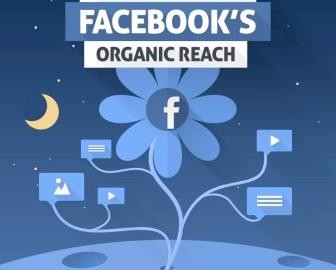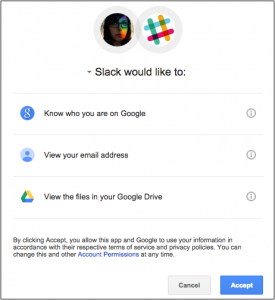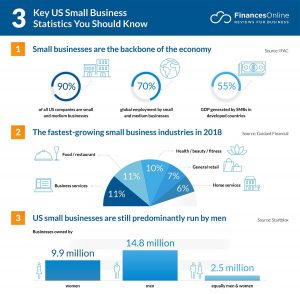Most brands would have noticed their organic Facebook reach has started to decline. This decline has been visible from late 2013.
According to Ogilvy, organic reach has declined to 6%, a drop of 49% since October 2013.
What is Organic Facebook Reach?
“Organic reach refers to how many people you can reach for free on Facebook by posting to your Page” – Brian Boland, Facebook
Infographic credit: Quicksprout.com
Reasons for Facebook’s Organic Reach Decline
Reason 1
Avoid overcrowding of content on news feed due to limited space and the amount of new content. 18 Million + business pages are competing for your attention.
“There is now far more content being made than there is time to absorb it. On average, there are 1,500 stories that could appear in a person’s News Feed each time they log onto Facebook” – Brian Boland, Facebook
Reason 2
Facebook wants to monetize their ads more, so you have to pay for increased reach.
How Facebook Decides What to Show in Your News Feed?
According to Facebook’s News Feed Manager Lars Backstorm, there are more than 100,000 weighing factors.
Just like Google ranking factors no one knows exactly but here are few well-known elements:
Post Type
The Facebook news feed algorithm looks at the type of content a particular user likes or interacts with when determining what to show them in their feed. For example, the content type could be Photos, Videos or Plain Text.
Posts a User Hides or Reports as Spam
Recent hides carry more weight than posts that a user has hidden a long time ago. Each time a user hides or marks a post as spam the Facebook algorithm checks to see what are the possibilities that the user will not like ‘other posts’ in the feed and removes them.
A User’s Interaction with Facebook Ads
The Facebook ads uses a different algorithm to the news feed algorithm but the interactions can influence what FB shows the user.
The Device and Internet Speed of the User
The news feed may vary based on the device the user is on – Mobile, Laptop or Tablet. The internet connection is also a weighing factor on how the feed is constructed. For example, if the user is on a slow connection then the feed might have more plain text content rather than multimedia content. You should ensure your blog or website loads super fast.
3 EdgeRank Factors
EdgeRank is the old Facebook news feed algorithm.
- Affinity – A user’s interaction with a page.
- Weight – Priority given to video and image based content.
- Decay – An older post is less likely to be displayed in the feed.
How News Feed Visibility is Influenced by User Behaviour?
Past Interaction with the Publisher
If you tend to interact with a particular author’s posts or a page then you will see these in your feed.
Your Preferred Post Type
If you interact with photos or videos most often, then you will see these type of posts in your feed.
Users Who Saw the Post and Their Response
The more positive interactions, the better for the post’s visibility. The more likes, comments and shares the better its chances of being showed in others feeds.
Any Negative Responses
If the post receives any negative feedback like reported as spam or hidden then the posts visibility is adversely affected.
How to Increase Facebook Reach Organically?
1. Follow the Fortune 500 Company Strategies
- Be Open and Disclose – also translates to being honest and reliable
- Accessible – when the customers need it
- Provide a Positive Experience – from sales to support
2. Take Advantage of Non Peak Times
Use Facebook Insights to find out your peak times for posts. The theory goes that you can reach more feeds in non-peak times. Like everything else in life you have to test this theory for yourself.
3. Share Unique Photos and Photos of Your Team Behind-the-Scenes
Original content is key to engage the audience. What if you combine it with engaging images – even better? If you have any behind the scene photos, share them.
4. Ask Questions to Engage Your Followers
Hard sales do not engage your followers. Build a community by listening to your audience. Ask them questions to find out what their pain points are to engage them.
5. Post Images that are Self-Explanatory
Infographics and pictographs are great examples of self-explanatory photos.
Wrapping it up
Facebook is the biggest social network in terms of monthly active users and getting free organic traffic from it is awesome. This infographic should help with amplifying your Facebook reach.
Who would say no to organic traffic regardless of whether it comes from Google or Facebook?
Digital & Social Articles on Business 2 Community(61)
Report Post








